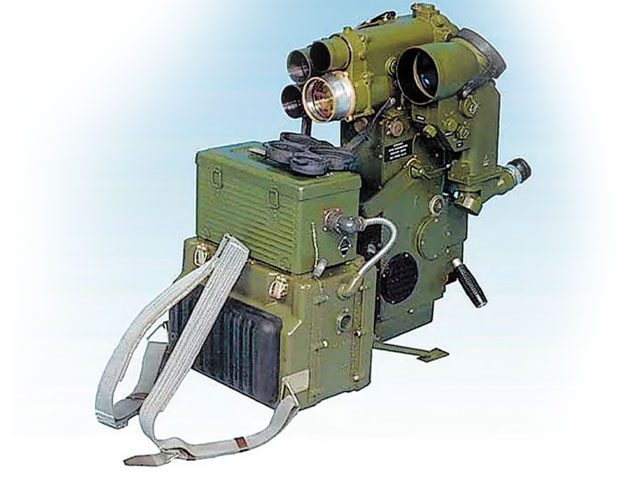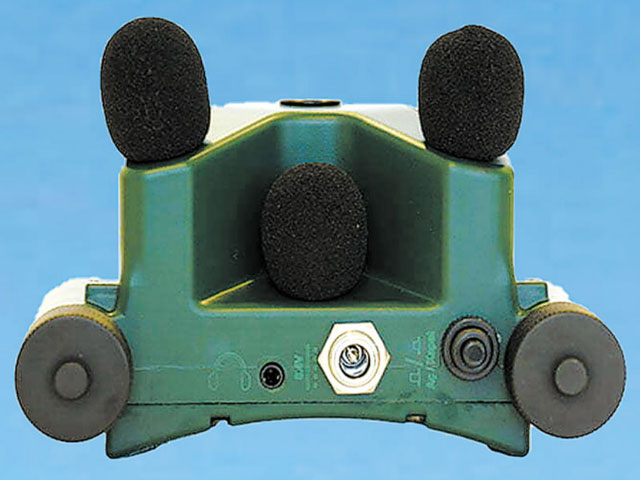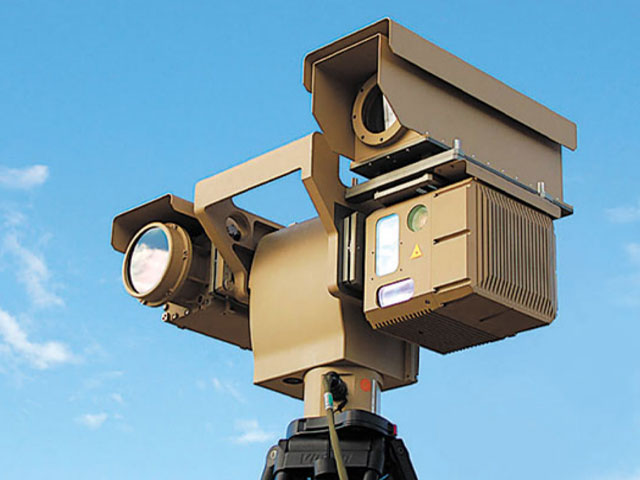

Figure ①: Russian PAPV laser anti-sniper detection system;

Figure ②: Turkey TRV/SD500 anti-sniper device

Figure ②: Turkey TRV/SD500 anti-sniper device
Between the battles, the valley was quiet. In the trenches, people were mending fortifications, while others were busy replenishing ammunition. Suddenly a gunshot rang out and someone fell. "There are snipers!" With a shout, everyone fell to the ground. And behind the rock on the distant hillside, the sniper lowered his body, lightly walked away like the wind.
For a long time, snipers on the land battlefield have undoubtedly been a "mysterious" existence. Aiming at the target unknowingly, completing the sniper kill cleanly, and retreating without anyone knowing.
But now, the "mystery fog" that shrouded the snipers is being dispelled little by little. There are more and more ways to counteract snipers, and anti-sniper detection equipment came into being.
So, how does the anti-sniper detection equipment complete the "capture" of snipers? What kinds are they? What is the effect of countermeasures? Please see related interpretation -
With the help of the "pervasive" penetration ability, the "assimilation of things" like stealth skills, and the "light and stone fire" like fatal blows, snipers are called "battlefield ghosts".
For a long time, once a sniper appeared on the battlefield, it would bring great fluctuations to the psychology of the infantry on both sides. Not only that, they can also destroy key targets or achieve tactical goals by shooting at vehicle fuel tanks, helicopter rotors, optoelectronic observers, ammunition depots, fuel depots, etc. During World War II, the Soviet army trained a large number of snipers into the battlefield, which caused a great degree of psychological panic among the German troops. In the North American Revolutionary War, a sniper of the North American "Continental Army" Murphy killed the British general Simon Fraser who led a reconnaissance team in the Battle of Saratoga, causing the British army's breakout plan to go bankrupt, Saratoga The Battle of Canada thus became a turning point in the North American War of Independence. The role of snipers is evident from this.
How to counter the opponent's "Ghost of Battlefield"? While researching counter-sniper tactics, countries are also developing counter-sniper equipment. Among them, there are devices similar to "ghost markers" - counter-sniper detection equipment.
A "ghost marker" is a device in some video games. Once the player owns the device, the ghosts can be revealed, marked where it is, and then captured and used by "me". The anti-sniper detection equipment that appears on the current battlefield has the same function as the "ghost marker", and it is also to "calibrate" the position of these "field ghosts" of snipers.
The purpose of developing various anti-sniper detection equipment is the same, but the methods and approaches to achieve the purpose are different. At present, these detection equipment mainly "frames" the sniper by detecting the physical characteristics of the firearm used by the sniper, rather than directly detecting the sniper itself. There are three main physical characteristics of firearms related to this: sound waves, infrared characteristics and light.
The TRV/SD500 anti-sniper device recently launched by Turkey belongs to the sonic anti-sniper detection system. This single-soldier portable detection device can be partially integrated on the helmet or worn on the shoulder. Its most obvious feature is the integration of several microphone sensors. Since the shock signal when the sub-bore is ejected and the shock signal formed by supersonic flight arrive at the microphone array at different times, with the help of the matching detection device, this time difference can be calculated to roughly determine the location of the shooting firearm. Provide a basis for further countermeasures.
Unlike Turkey's TRV/SD500 anti-sniper device, which focuses on individual use, the Russian COBA acoustic anti-sniper detection system adopts a vehicle-mounted method. From human to vehicle, not only the carrying method, but also the number and sensitivity of the microphone array, as well as the calculation speed and accuracy of the related supporting facilities, have changed. Because of the more intelligent and flexible "brain", the COBA acoustic anti-sniper detection system has a longer detection distance and can lock more targets in a shorter time.
The U.S. also has sonic anti-sniper detectors equipped on Stryker armored vehicles and "Humve" vehicles. It is said that the detector can lock the position of snipers about 10 seconds after the gunshot.
However, sonic anti-sniper detection equipment generally has a disadvantage: it is greatly affected by terrain and distance factors, and the positioning accuracy is often greatly reduced.
Infrared anti-sniper detection equipment has caught the "weakness" of sudden changes in light intensity and heat after the sniper fired. The process of its function is: by using an infrared camera to capture the flash and heat changes generated by the opponent's sniper muzzle, as well as the heat changes generated by the friction between the bullet and the air during high-speed flight, the computer can process the relevant data to calculate the sniper's sniper. Location. This is the case with the American-made "Viper" directional anti-sniper system, which consists of an infrared camera, a computer, an inertial sensor and a display. Compared with sonic counter-sniper detection equipment, infrared counter-sniper detection equipment has significantly improved in terms of positioning distance and accuracy, and can even determine what kind of cover the enemy sniper is relying on. But this kind of anti-sniper detection equipment also has drawbacks, that is, the camera lens must face the sniper in order to function. When encountering some snipers who "do not play cards according to the routine", for example, he suddenly appeared behind him and moved a large distance immediately after firing, then the infrared counter-sniper detection equipment was "helpless".
Whether it is sonic counter-sniper detection equipment or infrared counter-sniper detection equipment, in essence, it is a "repair" move after the opponent's sniper completes a fatal blow, and the existing losses cannot be recovered. To avoid such losses, it is necessary to detect the presence of enemy snipers in advance and strike the enemy first. As a result, laser anti-sniper detection equipment came into being.
Laser anti-sniper detection equipment usually consists of infrared semiconductor laser irradiators, eye-protecting laser rangefinders, cameras and global positioning systems. During combat, the laser irradiator is used to scan the enemy or the position where there may be snipers. Because the ability of the sight to reflect the laser is stronger than that of the background object, it may be "displayed". After being recorded by the camera, the location of the sniper can be located by overlaying information such as satellite maps. The French SLD-400 laser anti-sniper detection system has been tested by peacekeeping operations. The Russian army is equipped with the PAPV laser anti-sniper detection system of the same principle.
However, the shortcomings of laser anti-sniper detection equipment are also obvious. During the laser irradiation process, other reflective objects will also be recorded, so they are vulnerable to interference and deception by the enemy.The three anti-sniper detection methods of sound wave, infrared and laser have their own advantages and disadvantages, but they also effectively changed the "one-sided" situation in which "field ghosts" dominate local battlefields. Snipers were forced to adopt new tactics, such as blinding tactics that prioritized the destruction of counter-sniper detection systems, or countermeasures such as false target jamming.
At the same time, innovations and improvements in counter-sniper detection equipment continued. With the increase in the application of UAVs and the maturity of photoelectric and infrared detection technologies, designers in some countries have begun to turn their attention to new fields—using UAV air superiority to directly detect snipers themselves. This means that a new "ghost marker" is emerging, and sniper and counter-sniper equipment will start a new round of mutual destruction.
